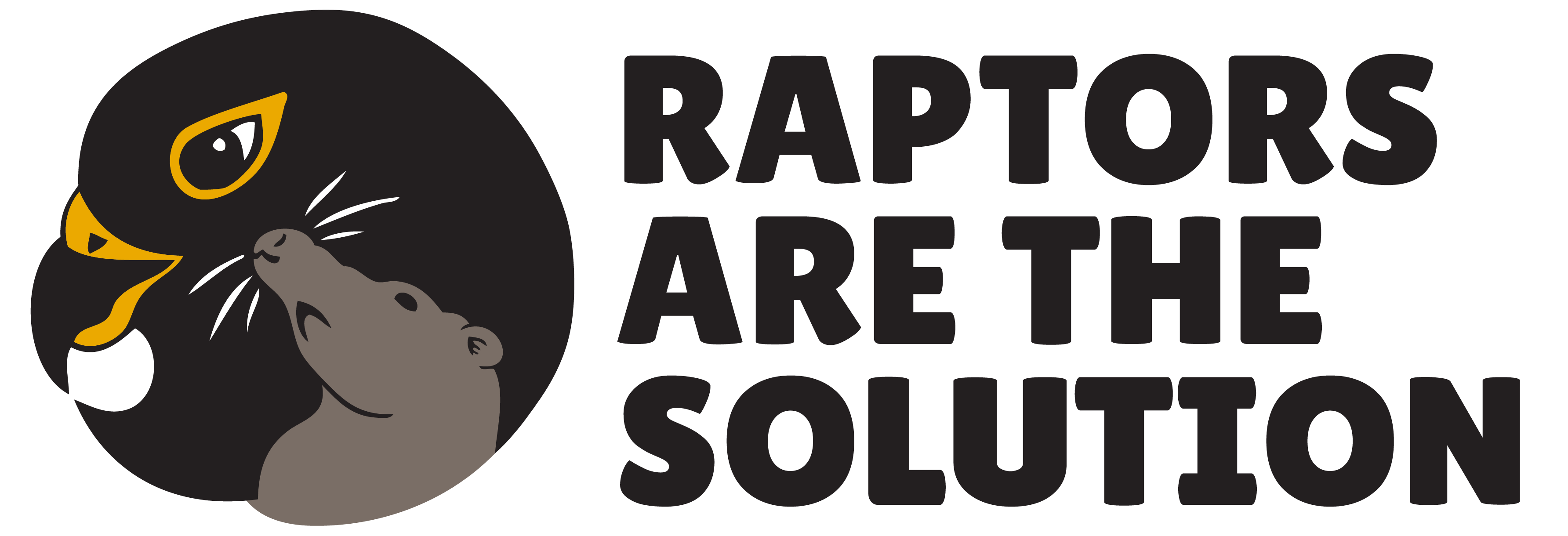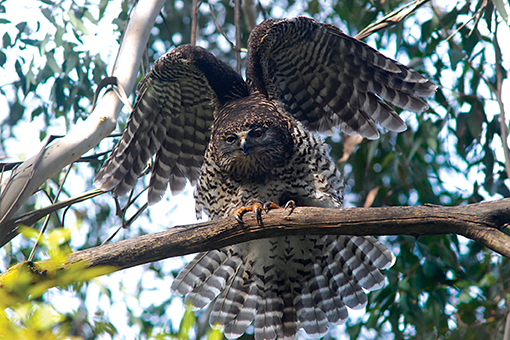by Joe Eaton
(Full article from RATS Tales July 2021)
While Australia’s latest mouse plague and proposed lethal responses to it occupy the headlines, wildlife advocates are monitoring a less publicized crisis: secondary poisoning of powerful owls by second-generation anticoagulant rodenticides (SGARs.) Forested gullies are the powerful owl’s classic habitat, but this species, like the northern goshawk in Germany and the Cooper’s hawk in the US, has become an urban raptor; populations have been documented in Sydney since the 1970s. Rodenticide exposure is a hazard of urban life and may be responsible for a recent spike in powerful owl fatalities. Within the last two years, 40 have been found dead in the southeastern state of New South Wales, in Sydney, Newcastle, and outlying areas. Although the bodies haven’t yet been analyzed for rodenticides, multiple cases of internal bleeding point to SGARs as a prime suspect. The nongovernmental organization BirdLife Australia has launched a fund-raising campaign to pay for testing the carcasses, currently stored in a freezer in the coastal city of Wollongong.
The largest Australian member of its order, the powerful owl is comparable in wingspan and bulk to the great horned owl of the Americas and the eagle-owls of Eurasia and Africa. Contrary to a general trend among raptors, males are larger than females. This versatile predator’s diet includes a wide range of mammals and birds, and even insects. In some areas, powerful owls specialize in tree-dwelling marsupials like possums and gliders, supplemented by fruit bats (flying foxes) and other native mammals. Elsewhere, though, non-native black rats make up a significant portion of their prey; non-native rodents accounted for almost a third of the diet of one owl living in an urban botanical garden. With rats come rodenticides. Powerful owls sometimes prey on goshawks and non-raptorial birds like ravens and magpies, which are known to eat rodents.
It would be no surprise if the owls in the freezer tested positive for the SGAR bromadiolone. According to BirdLife Australia, bromadiolone is government-approved for rodent control in and around buildings and is sold without restrictions. The New South Wales government’s bid to have bromadiolone authorized for agricultural use against this year’s outbreak of non-native house mice was recently rejected by the Australian Pesticides and Veterinary Medicines Authority, a federal agency. But the rodenticide is likely to already be in use in mouse-impacted areas without official sanction.
Although powerful owls don’t typically hunt in agricultural areas where rodenticides are being deployed, other raptors do. BirdLife Australia has raised the alarm about secondary poisoning of the region’s diverse community of hawks, kites, falcons, and owls. Black-shouldered kites, nankeen kestrels, and barn owls are often attracted to mouse outbreaks, as are native marsupial carnivores such as quolls. Direct poisoning of grain-eating birds like parrots and pigeons that might consume rodenticide-laced pellets is another risk. “We have massive concerns about superb parrots, a threatened species that regularly feeds on grain spills, and their distribution covers the plague regions,” says Holly Parsons, BirdLife Australia’s Urban Bird Program Manager. “We are hearing anecdotal reports of deaths of a range of birds. The New South Wales Environmental Protection Agency is collecting data on mass death events (more than five birds.)”
The powerful owl is a Red List species in the states of New South Wales, Queensland, and Victoria. With an estimated total population of three to four thousand, it’s vulnerable to habitat loss through the logging of old-growth eucalyptus forest. Although the owl has been adaptable enough to colonize Australian cities, conservationists are concerned that urban areas could become demographic sinks if too many owls fall victim to rodenticide poisoning, vehicle collisions, and other hazards. Like its small cousin the southern boobook and its fellow apex predator the Tasmanian wedge-tailed eagle, the powerful owl could well become another casualty of humanity’s chemical crusade against rats and mice.

